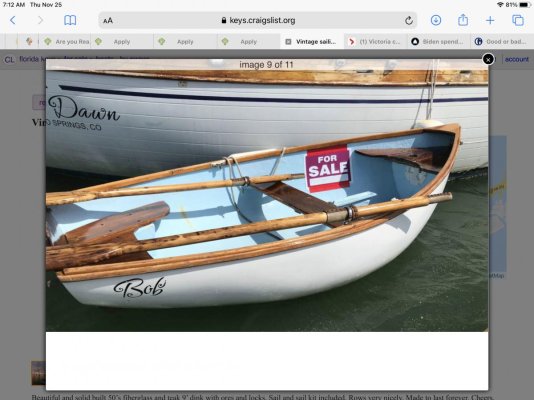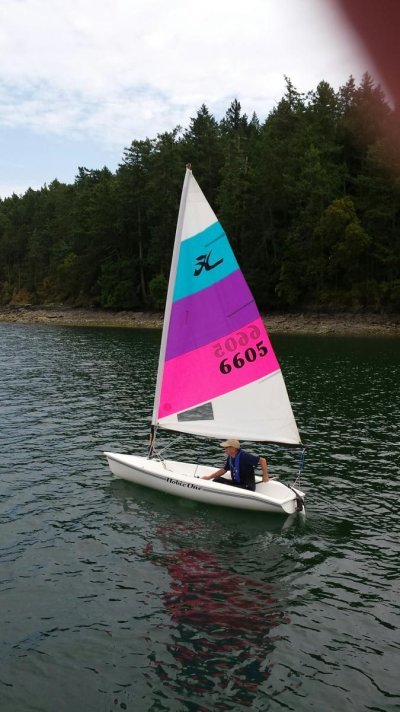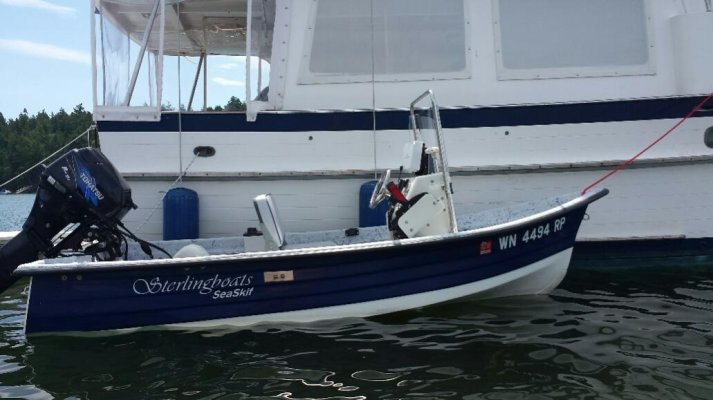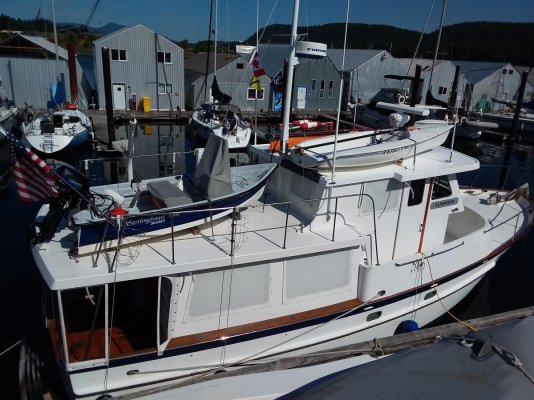Capt. Rodbone
Senior Member
- Joined
- Sep 6, 2020
- Messages
- 177
- Location
- U.S.
- Vessel Name
- SV Stella Polaris MV Sea Turtle
- Vessel Make
- 1978 VanDine Gaff rigged schooner, 1978 Grand Banks Classic Trawler
Happy Thanksgiving to all you wonderful trawler forum folks! We are 40+ year sailors, new to the trawler world, planning to “Loop” in a couple of years, and are loving this site!
My questions today are if I make a change to a hard dinghy and continue to use our mast lifting system would there be a reason to be concerned about the weight difference(doubtful but shouldn’t assume), and are there reasons I’m not thinking of to stick with the RIB that came with the boat (maybe)?
From our sailing cruising experiences The one comparison I’m thinking of is the tendency of a hard one left in the water overnight at anchor being much louder i when it bumps against the hull at night.
My reasons for possibly making the change are threefold. I like the thought of being able to put the sail rig on it and enjoy anchorage sails, I like the flexibility of knowing if there are outboard troubles We can row or sail to shore. I know the exercise that comes with rowing is good for us, and lastly, I’m that weirdo that since my first exposure to Brightwork in 1982, I’m very happy with my headphones on and a varnish brush in my hand. Not sure I would want to know the number of hours I’ve devoted to it, but it gives me great pleasure.
I bring up varnishing because if I buy one it will be similar to the one I have attached a pic of here. This one is “ supposedly” for sale, but multiple attempts to reach the Craigslist lister have gone unanswered so it’s starting to look like it’s sold and he hasn’t taken it down, or it’s fake, although those usual expose themselves with a ridiculous price. If I go this route it will at a minimum have wooden seats I can keep Bristol, and preferably a caprail like this one.
Thanks in advance for your thoughts and suggestions. I suspect I will get replies for some of you who say “I switched and I’m happy I did “, as well as some that will say “I did it and I wish I hadn’t”. I think I will give adequate weight to the things I’ve mentioned here, it’s the things I haven’t thought about that need to go into the equation.
My questions today are if I make a change to a hard dinghy and continue to use our mast lifting system would there be a reason to be concerned about the weight difference(doubtful but shouldn’t assume), and are there reasons I’m not thinking of to stick with the RIB that came with the boat (maybe)?
From our sailing cruising experiences The one comparison I’m thinking of is the tendency of a hard one left in the water overnight at anchor being much louder i when it bumps against the hull at night.
My reasons for possibly making the change are threefold. I like the thought of being able to put the sail rig on it and enjoy anchorage sails, I like the flexibility of knowing if there are outboard troubles We can row or sail to shore. I know the exercise that comes with rowing is good for us, and lastly, I’m that weirdo that since my first exposure to Brightwork in 1982, I’m very happy with my headphones on and a varnish brush in my hand. Not sure I would want to know the number of hours I’ve devoted to it, but it gives me great pleasure.
I bring up varnishing because if I buy one it will be similar to the one I have attached a pic of here. This one is “ supposedly” for sale, but multiple attempts to reach the Craigslist lister have gone unanswered so it’s starting to look like it’s sold and he hasn’t taken it down, or it’s fake, although those usual expose themselves with a ridiculous price. If I go this route it will at a minimum have wooden seats I can keep Bristol, and preferably a caprail like this one.
Thanks in advance for your thoughts and suggestions. I suspect I will get replies for some of you who say “I switched and I’m happy I did “, as well as some that will say “I did it and I wish I hadn’t”. I think I will give adequate weight to the things I’ve mentioned here, it’s the things I haven’t thought about that need to go into the equation.






